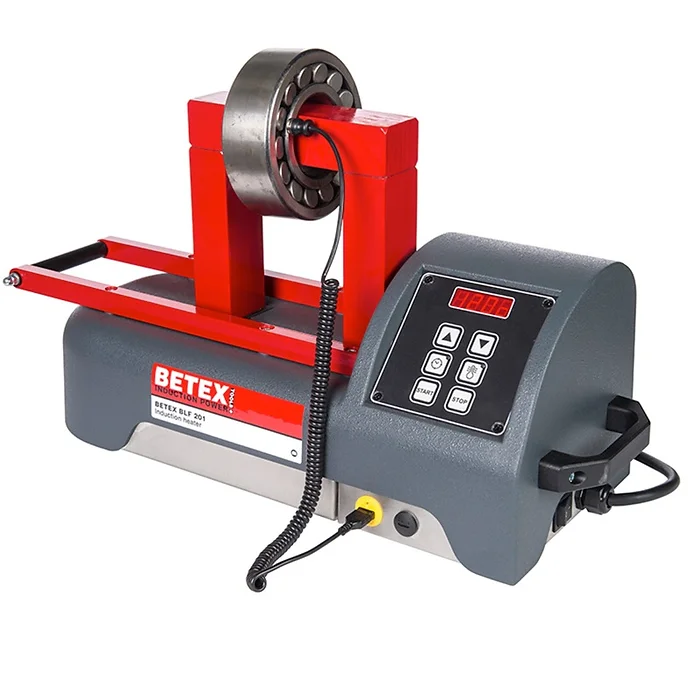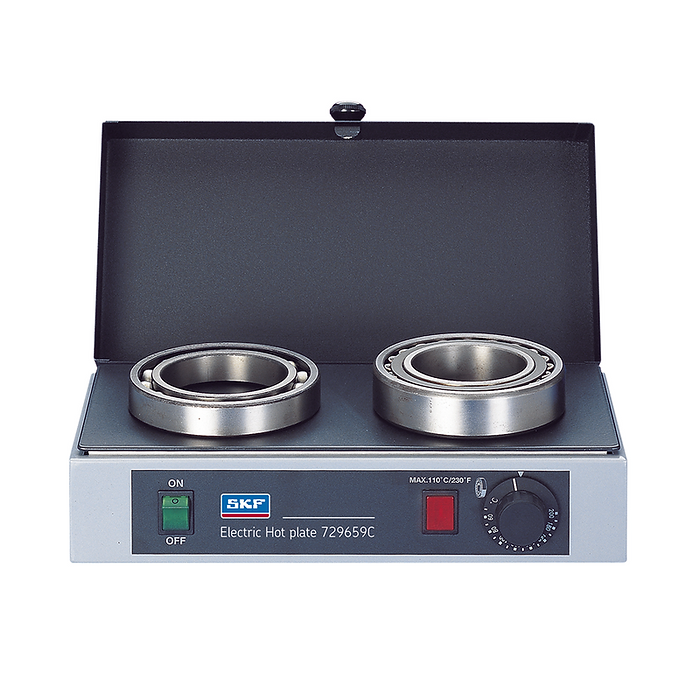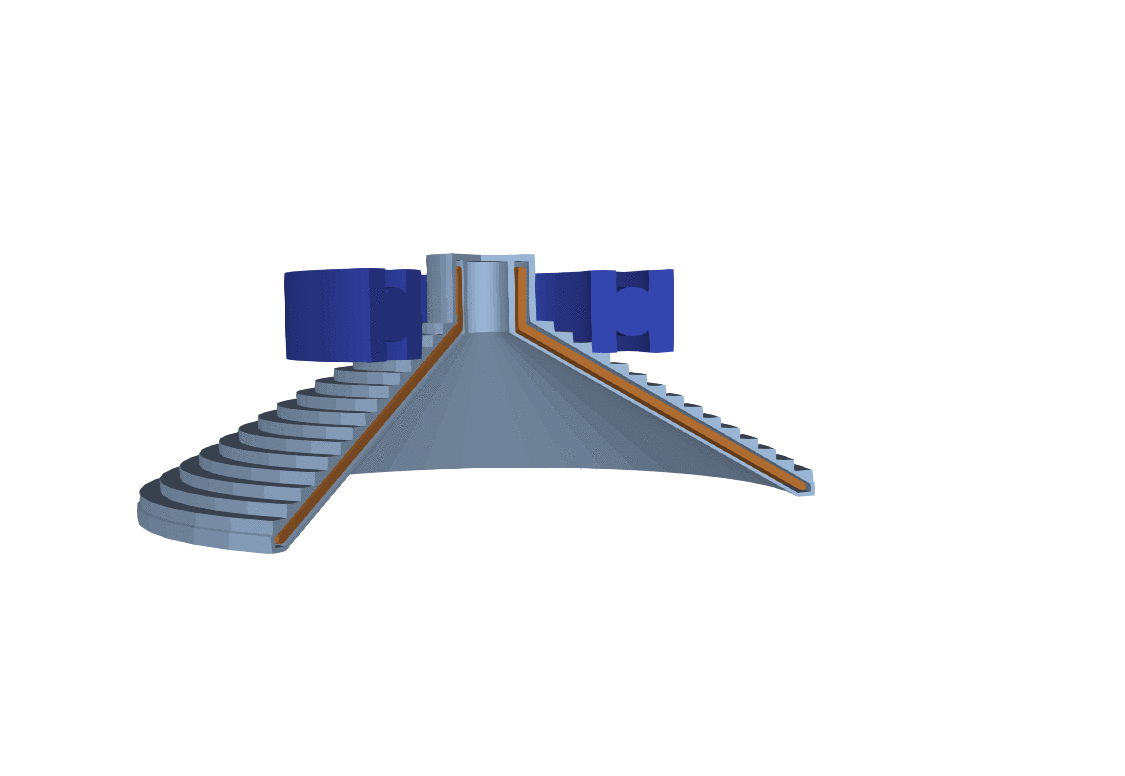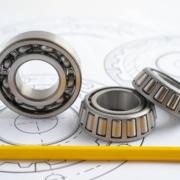Ball-bearing induction heating process modeling with CENOS
Rolling bearings, including sealed or greased bearings, are heated with the induction for the purposes of easier mounting on the shaft. So-called hot mounting of the ball-bearings is done with special devices – portable induction heaters.
These devices are using specially designed induction coils, to ensure bearings are safely and efficiently heated to the optimum temperature to facilitate the assembly or disassembly of bearings, gears, sprockets, and other machine components.
CENOS software can be used to help determine the right temperature and heating recipe for these devices.
Heating process
The ball bearing is placed on the portable induction heater device. Heat is introduced to the inner ring of the bearing, which causes thermal expansion and allows the bearing or gear to be mounted or dismounted without damage.
A temperature sensor mounted to the bearing inner ring measures the temperature as the bearing heats, typically between 230° to 250° F (110° to 120° C). The heart of these heating devices is a live electric coil with an iron core (primary circuit). This
induces a high current at low voltage in a short-circuited secondary circuit (a bearing or any other round workpiece). The part to be mounted on the shaft is heated quickly; the device itself, the ledges, and non-metallic components remain cool.
After heating, the parts are demagnetized and voltage-free. The safe operation of the device is ensured by means of an integrated temperature cut-off switch, a current regulator (thyristor), and an overcurrent protector. The devices can be operated continuously without the need for cooling.
Heater types
There are three most common types of bearing heaters for bearing assembly are yoke-style, cone-style, and hot plates. There are various models on the market like FAG PowerTherm heaters by Schaeffler Group, Portable heaters by NSK Maintenance Tools, TIH series by SKF Maintenance Products, etc.

Yoke-style bearing heaters are designed with a yoke that is placed through the bearing bore. Many bearing heaters have different size yokes which can be changed to accommodate various bearing sizes. Some of them are purposed for extra-large bearings.

Hot plate style bearing heaters have a flat heating surface. Hot plates are typically used for heating smaller bearing sizes.

Cone-style bearing heaters are, as the name implies, cone-shaped, and are have a stepped design to accommodate a range of bearing sizes. Heat is transmitted from the cone into the bearing inner ring, which eliminates the magnetization caused by induction heaters.
CENOS allows you to model all three kinds of ball-bearing induction heaters, any geometry, coil, or workpiece size or material.
Cone-style induction heater simulation
Our engineers at CENOS did a cone-style heater ball-bearing heating simulation with the aim to detect the right heating parameters like heating time and necessary power, also to calculate the coil temperature to avoid the risk of overheating.

The right temperature heating recipe was discovered by the means of simulation.
- Bearing material: medium carbon steel
- Recommended heating temperature: 110 °C
- Current: 8 A
- Frequency: 24 kHz
- Heating time: 3 min
- Insulator material: Glasschaum-Granulat Case A
- Coil type: Stranded coil
The image below shows the ball-bearing and induction heater coil overheating simulation:

Overheating simulation
You can see what happens if materials are chosen poorly. The heat from the induction coil barely reaches the bearing, the device is not optimized for normal function. After changing some of the parameters, choosing the best materials, you can see the end result of well built, functional bearing heater, which you can use to improve actual real-life devices.
Geometry:
- Download IGES file – Bearing heater
- Download IGES file – Bearing heater 90 degrees slice
- Download IGES file – Bearing heater 2


